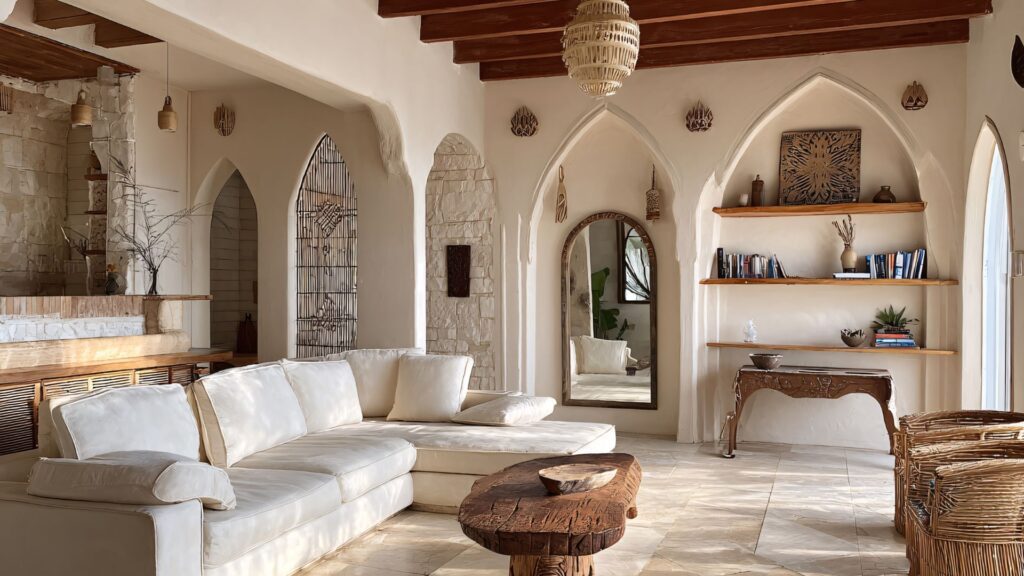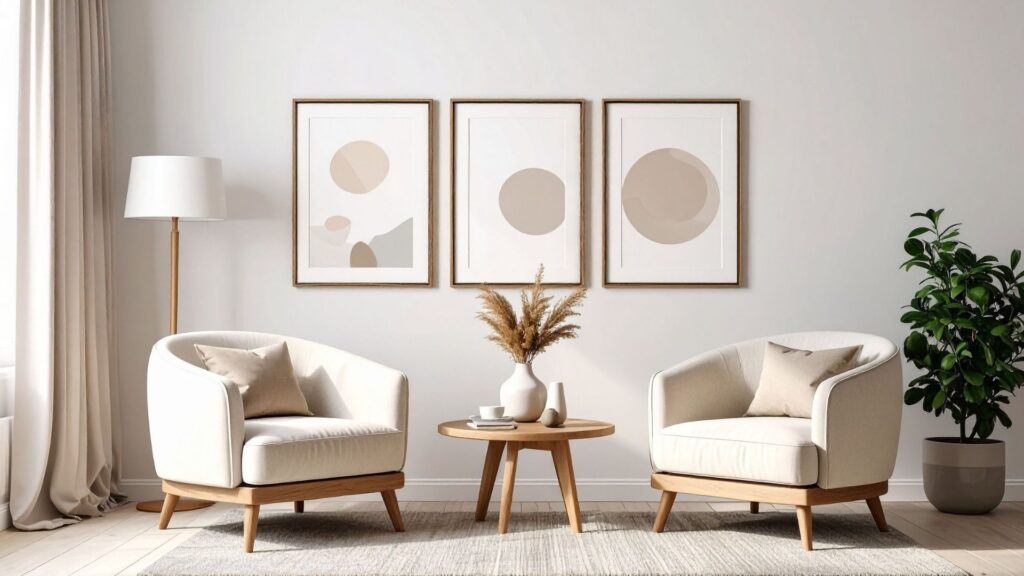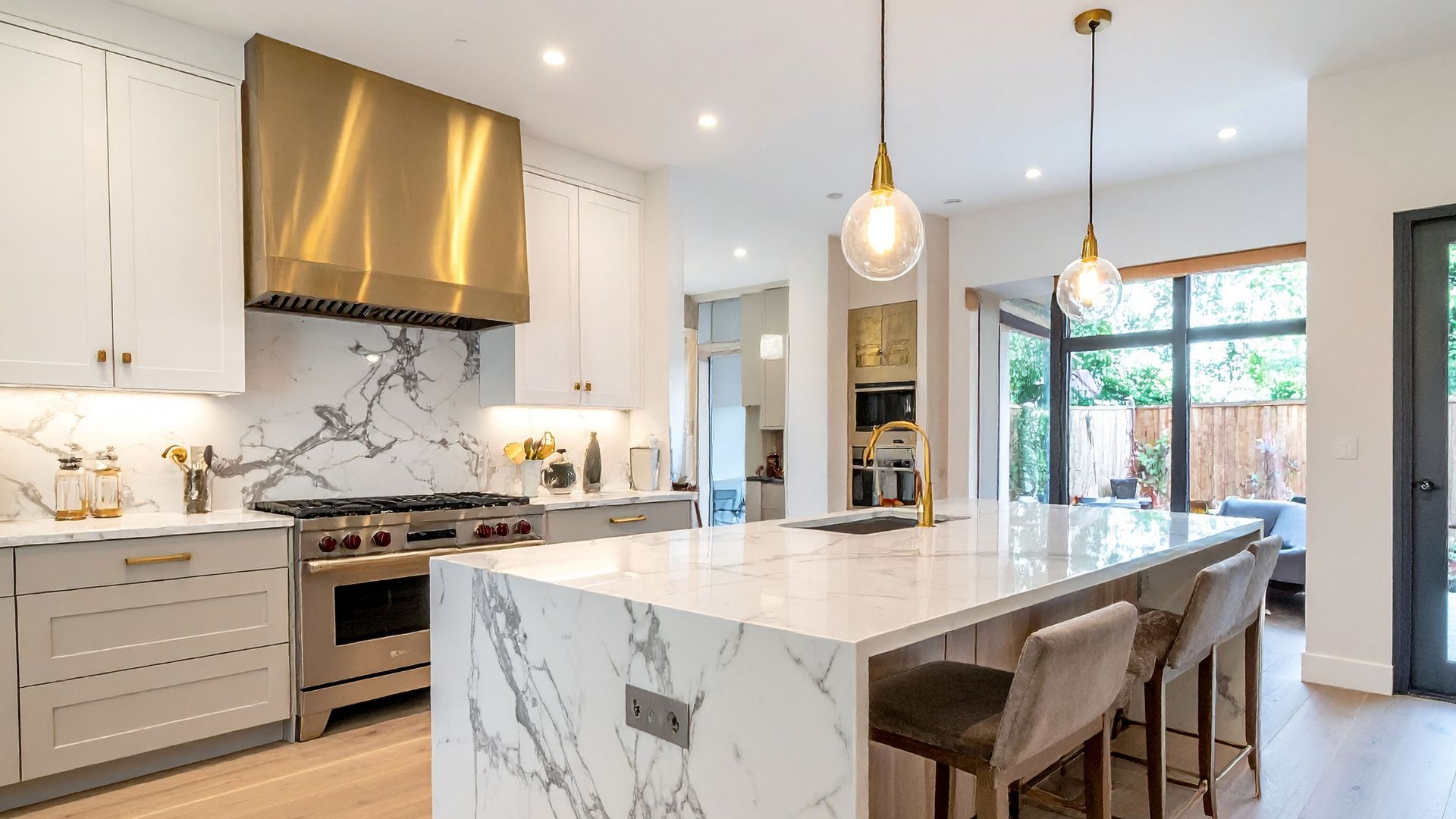Rhode Island interior design blends coastal heritage, sustainable systems, and modern convenience to reshape how residents and businesses use space. This article explains the leading trends—coastal chic, warm natural palettes, biophilic and sustainable design, and contemporary minimalism—showing how each trend transforms light, flow, and material choices across Newport cottages, Providence rowhouses, and suburban homes. Readers will find practical tips for applying these trends locally, from selecting finishes that withstand coastal humidity to integrating plant-forward layouts that support wellbeing.
The piece also examines kitchen and bathroom remodel priorities, offering material comparisons and cost-aware choices tailored to Rhode Island properties. Throughout, target terms like interior design trends in Rhode Island, biophilic design in Rhode Island, and Rhode Island kitchen design trends are used to connect practical guidance with local context and current perspectives.
What Are the Top Interior Design Trends in Rhode Island?
Top Rhode Island trends distill regional character into practical design moves that improve comfort, durability, and resale value. These trends respond to coastal light, historic architecture, and an increasing focus on wellbeing and sustainability. Designers emphasize materials and layouts that perform in humid, salty air while creating warm, layered interiors that pair with New England exteriors. Below is a concise list of the most influential trends and why they suit Rhode Island properties.
Rhode Island’s top trends include:
- Coastal chic adapted for modern living: a restrained maritime palette and durable natural textures that resist moisture.
- Warm color palettes with natural materials: layered earth tones and reclaimed wood to add warmth to sunlit rooms.
- Sustainable, biophilic interiors: plant integration, low-VOC finishes, and locally sourced materials for health and longevity.
- Contemporary minimalism with smart features: streamlined layouts that preserve historic character while adding tech conveniences.
These priorities show how coastal identity, material performance, sustainability, and technology converge to shape homes and commercial spaces across the state.
Which Coastal and Nautical Styles Define Rhode Island Homes?
Coastal and nautical aesthetics in Rhode Island emphasize texture and restraint rather than literal seaside ornamentation. Key elements include weathered or engineered wood, woven rattan, linen textiles, and muted blues paired with warm neutrals to balance sunlit coastal interiors. Practical choices—like moisture-resistant finishes and UV-stable fabrics—help materials age gracefully near salt air. To achieve a refined coastal look without clichés, prioritize tactile materials and layered neutrals, then add maritime accents sparingly for visual interest.
This approach suits everything from small beach cottages to renovated Newport townhouses and leads naturally into selecting warm palettes and natural materials for interior cohesion.
How Are Warm Color Palettes and Natural Materials Shaping RI Interiors?
Warm palettes and honest materials create inviting, resilient interiors well-suited to Rhode Island’s light and architecture. Designers favor clay, terracotta, soft ochres, and muted greens layered with reclaimed wood, honed stone, and textured textiles to add depth and comfort. These pairings improve perceived daylight balance in north-facing rooms and complement historic moldings and floors. Practical recommendations include selecting low-VOC paints and durable upholstery fabrics rated for coastal conditions. Layering warm tones with natural materials enhances longevity and fosters a seamless transition between indoor rooms and exterior landscapes.
How Is Sustainable and Biophilic Design Influencing Rhode Island Spaces?

Sustainable and biophilic design in Rhode Island fuses ecological materials with nature-focused spatial strategies to improve indoor air quality, thermal comfort, and occupant wellbeing. Biophilic moves—daylighting, views to vegetation, indoor plantings, and natural materials—work together to reduce stress and increase productivity in homes and offices. Implementing these strategies requires material choices and landscape coordination that consider Rhode Island’s seasonal rainfall and coastal microclimates. The next subsection outlines commonly used eco-friendly materials and practical selection criteria.
What eco-friendly materials and attributes are proving popular in Rhode Island design?
| Material | Source / Attribute | Best Use |
| Reclaimed wood | Local salvage, lower embodied carbon | Flooring, cabinetry, accent walls |
| Low-VOC paints | Manufactured for low emissions | Whole-house paint, trim, and cabinetry |
| Natural fiber textiles | Hemp, linen, wool from regional mills | Upholstery, drapery, rugs |
| Recycled metal & glass | Post-consumer content | Fixtures, hardware, decorative elements |
This table highlights practical, locally appropriate material choices that deliver environmental benefits while matching regional aesthetics. Choosing these materials reduces indoor pollutants and supports durable finishes suitable for coastal and urban properties.
What Eco-Friendly Materials Are Popular in Rhode Island Interior Design?
Practical sustainable material choices include reclaimed wood for character, low-VOC paints for healthier air, and natural fiber textiles for breathable finishes. Each option delivers a different balance of cost, environmental impact, and longevity, so selection depends on project goals. Reclaimed wood lowers embodied carbon while adding texture; low-VOC coatings reduce indoor chemical exposure; and durable natural textiles tolerate coastal humidity when properly finished. Local sourcing shortens supply chains and supports regional craftspeople, reinforcing both ecological and cultural connections. These materials set the stage for biophilic interventions that directly tie interior comfort to exterior landscape health.
How Can Biophilic Elements Improve Rhode Island Homes and Offices?
Biophilic elements—such as generous daylighting, framed views to planted landscapes, and interior planters—improve mood, reduce stress, and support cognitive performance in both homes and workplaces. Incorporating green walls, operable windows, and planted courtyards strengthens the visual and physical connection to nature, which is especially impactful in dense urban areas like Providence. Exterior plantings and maintained landscapes amplify indoor biophilic effects by providing seasonal interest and filtration of air pollutants.
What Are the Latest Modern and Contemporary Interior Design Trends in Rhode Island?

Contemporary trends across Rhode Island blend minimalist layouts with selective vintage pieces, smart-home features, and industrial textures adapted to local architecture. These strategies prioritize functional circulation, energy efficiency, and respect for historic fabric while introducing modern comforts. Practical approaches include concealed smart controls, integrated AV, and modular storage that preserve sightlines in smaller Providence units. The following list highlights specific modern features gaining traction.
Modern and contemporary features in demand:
- Smart lighting and thermostats that improve comfort and reduce energy use.
- Minimalist furniture that maximizes perceived space in compact homes.
- Mid-century and industrial accents are used selectively to complement historic elements.
These features can be blended to maintain architectural integrity while delivering modern performance, bridging the gap between historic charm and contemporary living.
Which Minimalist and Smart Home Features Are Trending in Providence?
Providence designers favor smart lighting scenes, integrated thermostats, and discreet AV that enhance comfort without visual clutter. Minimalist furniture and multi-functional built-ins help small urban homes feel spacious, while programmable controls reduce energy use and support sustainable operation. When retrofitting historic properties, choose surface-mounted yet sympathetic hardware and route wiring through existing cavities to avoid damaging original fabric. These measures allow modern convenience to coexist with preserved architectural details, improving daily function and long-term value.
How Do Mid-Century Modern and Industrial Chic Styles Fit Rhode Island Spaces?
Mid-century modern and industrial chic fit Rhode Island when scaled and finished for local contexts—think warm teak tones and matte metals rather than cold chrome. Use mid-century silhouettes to introduce clean lines, then ground them with natural textiles and regionally appropriate wood to avoid stylistic dissonance. Industrial elements such as exposed beams or steel windows work well in converted mill or loft spaces, but should be tempered with softer finishes in residential settings. Thoughtful material pairings maintain harmony between old and new and prevent mismatches that undermine a cohesive design.
How Are Kitchen and Bathroom Remodels Reflecting Rhode Island Design Trends?
Kitchen and bathroom remodels in Rhode Island emphasize functional openness, durable materials, and water-wise fixtures to balance lifestyle needs and coastal performance. Homeowners prioritize islands and flexible storage in kitchens, alongside spa-like bathrooms that use water-efficient fixtures and natural materials. Designers balance aesthetics with regional durability, choosing finishes that withstand humidity and salt air. Below is a quick comparison of common remodel features and their trade-offs to guide decisions.
Key kitchen and bathroom features for Rhode Island remodels:
- Open islands with integrated storage for flexible cooking and social flow.
- Natural-material cabinetry and engineered countertops that resist humidity.
- Spa-like bathrooms with water-efficient showers and textured stone tiling.
These choices support functional living while reflecting local light and weather patterns.
What Are the Key Features of Open Concept Kitchens in Rhode Island?
Open concept kitchens prioritize circulation and sightlines, linking cooking areas with living spaces to support modern family life and entertaining. Design must consider ventilation and moisture control—especially in compact or historic homes—so range hoods, operable windows, and durable finishes are essential. Storage solutions such as deep drawers and hidden pantry systems preserve a clean aesthetic without sacrificing function. Selecting engineered wood or moisture-resistant cabinetry helps maintain appearance and performance in humid coastal environments.
| Feature | Benefit |
| Open island with storage | Enhances social flow and prep space |
| Engineered countertops | Durable and low-maintenance |
| Water-efficient appliances | Lowers utility costs and water use |
This comparison clarifies trade-offs between functionality, resilience, and budget when updating kitchens in Rhode Island homes. Choosing elements that suit regional climate and usage patterns prevents premature wear and supports long-term value.
How Are Spa-Like and Sustainable Bathroom Designs Transforming RI Homes?
Spa-like bathrooms in Rhode Island combine calming materials, daylighting, and water-saving fixtures to create restorative spaces that respect environmental constraints. Typical strategies include low-flow showers, radiant floor heating on programmable controls, and natural stone or large-format porcelain for easy maintenance. For smaller baths, prioritize efficient fixture layouts and vertical storage to preserve openness. Integrating sustainable plumbing fixtures reduces water consumption while maintaining luxury.

